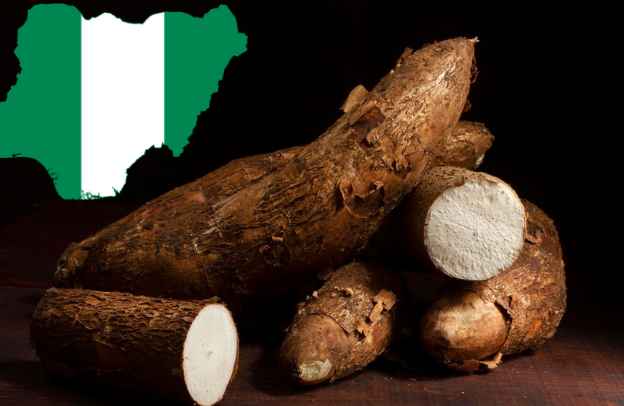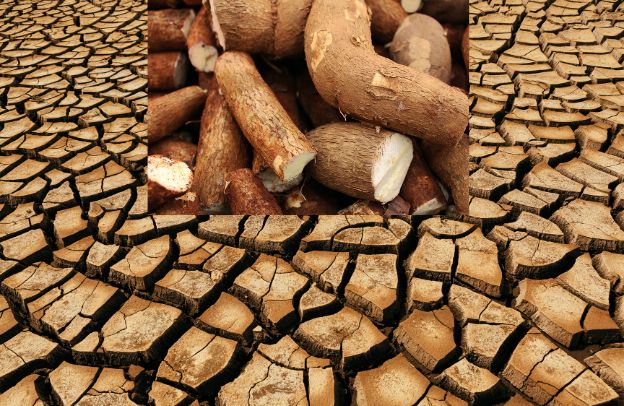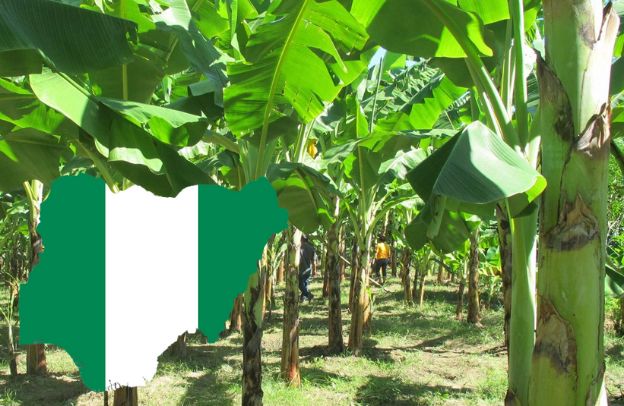Nigerian Cassava Production: How to Transform a Staple Crop into Africa’s Economic Powerhouse

Imagine a future where Nigeria’s vast cassava fields not only feed millions but also serve as a cornerstone for industrial growth and job creation. Have you ever wondered how a crop that has sustained communities for centuries could become the catalyst for Africa’s agribusiness revolution? As a member of the African diaspora, you have a unique opportunity to leverage Nigeria’s agricultural potential, drive sustainable economic development, and help combat food insecurity.
Learn How to Leverage Your Story through our Story To Asset Transformation (S.A.T) Framework.
This article will delve into the techniques and methods of cassava processing, a critical step in unlocking the crop’s full economic and nutritional benefits, and explore how your investment can create lasting change.
Understand the Nigeria’s Agricultural Landscape
Nigeria’s agricultural landscape offers vast, untapped opportunities. According to a PwC report on the Current State of Nigeria Agriculture and Agribusiness Sector, the sector of the economy is split into four key areas: crop production (87.6%), livestock (8.1%), fishing (3.2%), and forestry (1.1%). Crop production dominates, driving the industry’s contribution of around 24% to Nigeria’s GDP and employing over 36% of the workforce—making agriculture the country’s largest employer.
On the larger African stage, Africa’s food import bill, which stood at $35 billion in 2016, is projected to soar to $110 billion by 2025. Meanwhile, the continent’s agribusiness sector is set to hit $1 trillion by 2025, fueled by a rapidly expanding middle class.
Yet, barriers like weak regional integration and stagnant output growth have held back intra-Africa trade, which was only 16.6% in 2017—far behind Europe’s 68% and Asia’s 59%. This challenge is compounded by Africa’s weak agricultural value chains, with only $12 billion of the $62 billion in exports from processed goods.
For Nigeria, agriculture remains the backbone of the economy. Despite having over 70 million hectares of arable land, only about 40% is actively cultivated. Cassava, for example, according to FAO, is grown in massive quantities—over 59 million tonnes annually—but much of it remains in raw form at the subsistence level.
For you, as an African diaspora entrepreneur, this is not just an opportunity to invest—it’s a chance to lead a transformation.
By adding value to Nigeria’s agricultural products, particularly cassava, you can help create jobs, boost local economies, and combat pressing issues like food insecurity and malnutrition. This is a moment to be part of Africa’s economic renaissance, turning potential into progress.
The Multifaceted Value of Cassava
Cassava (Manihot esculenta) is one of Africa’s most important staple crops, known for its resilience and versatility. Traditionally, cassava is processed into foods such as garri, fufu, and tapioca, which are central to the diets of millions across West and Central Africa. Yet, cassava’s potential extends far beyond traditional consumption.
It is a rich source of carbohydrates, providing up to 80 grams per 100 grams of fresh root (World Health Organization, 2023) and its leaves are a good source of vitamin A, a nutrient critical for vision, immunity, and overall health.
Moreover, cassava can be converted into industrial starch, bioethanol, animal feed, and even biodegradable plastics. These products are increasingly in demand in global markets, positioning cassava as a potential multi-billion-dollar industry.
Unlike wheat or rice, which require more controlled growing conditions, cassava thrives in marginal soils and under adverse climatic conditions. This resilience makes it particularly attractive for investment in regions prone to drought and soil degradation.
See also: Cassava Leaves: A Delicious and Nutritious Addition to Your Diet
The Cassava Processing Journey: From Root to Ready Product
To unlock cassava’s full potential, it is essential to process the raw roots into marketable products. The methods used in cassava processing can significantly influence both the quality and quantity of the final product. As you consider investing in this sector, understanding the processing techniques and identifying opportunities for improvement is key.
Peeling and Washing: The Essential First Steps
Before any transformation can occur, cassava must be thoroughly cleaned. The process begins with peeling and washing to remove dirt, debris, and potential contaminants. This step is critical not only for safety but also for ensuring the quality of the final product.
Manual Peeling vs. Mechanical Peelers:
Manual peeling, which involves using a knife or simple peeler, is the most common method among small-scale farmers. Although it is labor-intensive and time-consuming, manual peeling is accessible and requires minimal investment.
In contrast, mechanical peelers, equipped with rotating blades offer faster and more efficient processing but come with higher capital costs. This trade-off is a key consideration for scaling operations.
Washing Techniques:
After peeling, the roots must be washed to remove residual dirt and cyanogenic glucosides (naturally occurring compounds that can release cyanide). Washing is done either by hand or with machines such as scrubbers and washers.
Ensuring proper sanitation and hygiene during this process is essential to maintain the safety and quality of the product.
Grating: Breaking Down the Cassava Root
Once the roots are peeled and washed, the next step is grating. Grating breaks down the cassava into smaller, manageable pieces, separating the soft inner flesh from the tough, woody core.
See also Processing and Marketing of Selected Cassava Products in South-east Nigeria
This process is crucial because it prepares the cassava for fermentation and drying, ultimately affecting the texture and consistency of the final product.
Manual Grating:
- Small-scale farmers often use traditional tools like graters or mortars and pestles. While this method is accessible, it is labor-intensive and can result in inconsistencies in the texture of the grated cassava.
Mechanical Grating:
- Machines such as chipper-graters offer uniformity and efficiency, ensuring a consistent product suitable for large-scale processing. However, the initial investment is higher, which may limit accessibility for smaller operators.
After grating, the cassava is usually squeezed or pressed to remove excess moisture. Proper handling during this phase is crucial, as excessive moisture can lead to spoilage and reduced shelf-life.
Fermentation: Enhancing Safety and Nutritional Value
Fermentation is a transformative step that not only reduces harmful compounds like cyanogenic glucosides but also enhances the nutritional profile, flavor, and shelf-life of cassava products. The grated cassava is placed in fermentation tanks or containers, where it is allowed to ferment for 24 to 48 hours.
Biochemical Benefits:
During fermentation, beneficial microorganisms convert the cassava’s carbohydrates into organic acids such as lactic acid, which helps to lower the pH and reduce toxic compounds. This process improves the safety and digestibility of cassava.
Flavor and Texture:
- Fermentation also develops characteristic flavors that are integral to traditional cassava products like garri. Controlled fermentation can enhance taste while preserving nutritional content.
Monitoring and Quality Control:
- For successful fermentation, parameters such as temperature, pH, and humidity must be carefully monitored. Modern processing plants often use digital sensors and automated systems to ensure consistent results.
Drying: Preserving the Product
After fermentation, drying is the next critical step. Removing moisture is essential for prolonging the shelf-life of cassava products and preparing them for milling.
Sun-Drying:
- The traditional method involves spreading the grated cassava on mats under the sun. While cost-effective, this method is weather-dependent and can be inconsistent.
Oven or Machine Drying:
- Mechanical drying methods offer greater control over temperature and drying times, ensuring a uniform product. These methods, however, require higher capital investment but are ideal for large-scale operations where consistency and speed are paramount.
Effective drying reduces the risk of microbial contamination and sets the stage for the milling process.
Milling: Turning Cassava into Fine Flour
The final transformation in the processing chain is milling. Once the cassava is thoroughly dried, it is ground into a fine powder, which can be used to produce various products such as fufu, garri, lafun, and other value-added foods.
Manual vs. Mechanical Milling:
Traditional manual methods using mortar and pestle are still prevalent among small-scale farmers, though they produce coarser flour with inconsistent particle sizes. Modern milling machines, such as hammer mills or pin mills ensure a finer, more consistent product, suitable for both local consumption and export markets.
Sieving and Quality Control:
- After milling, the flour is sieved to remove any remaining larger particles. Quality control measures ensure that the flour meets both local standards and international market requirements.
See also: Cassava Processing What Are The Techniques And Methods
Packing and Storage: Securing Value
Proper packaging and storage are essential final steps in cassava processing. Once the cassava has been milled into flour or converted into other products, it must be packaged in a way that preserves its quality and extends its shelf life.
Packaging Techniques:
Products are typically packed in food-grade bags or containers that are airtight and moisture-proof. Innovations in packaging, such as biodegradable materials, not only protect the product but also appeal to environmentally conscious consumers.
Storage Conditions:
- Storing the processed cassava in cool, dry conditions is crucial. Inadequate storage can lead to spoilage and significant losses, undermining the profitability of the entire processing chain.
The Economic and Social Impact of Cassava Processing in Nigeria
The study “Social, Economic and Ecological Factors Influencing Cassava Farming in Nigerian Rural Context,” authored by Isaac Oyekola, Joseph Adeniyi Oye, F Samuel, Oyeyipo Eyitayo, Arisukwu Ogadinmma C. Ph.D, K Iwelumor, and Rasak Bamidele, investigates the socioeconomic and ecological factors affecting cassava farming in rural Nigeria, focusing on Kuje Area Council, Abuja.
Through a descriptive research design, the study found that various factors influence cassava farming, and that cassava provides numerous products and by-products with significant socioeconomic benefits.
However, most cassava farmers reported a lack of government support, with only a minority receiving interventions like financial assistance, seeds, and farming equipment. The study concluded that improved government support, including access to land, loans, amenities, and favorable policies, is essential to boost cassava farming and recommended small-scale investments in rural areas to foster growth in the sector.
What all this means is that the processing of cassava offers far-reaching benefits beyond mere food production. For small and medium-scale farmers, it is a pathway to economic empowerment and sustainable development.
Food Security and Nutritional Benefits
Cassava is a major food source in Nigeria and across Africa, providing affordable, energy-dense nutrition. By processing cassava into value-added products, you help:
- Increase the availability of nutritious food: Processed cassava products like flour and fufu are staples in many households.
- Combat malnutrition: Cassava leaves, which are rich in vitamin A, play a crucial role in reducing vitamin A deficiency, a leading cause of preventable blindness in children (UNICEF, 2023).
- Provide a stable food supply: Cassava’s resilience to drought and its ability to be stored for long periods ensure that even during lean seasons, communities have access to essential calories.
Economic Empowerment and Job Creation
Investments in cassava processing can drive economic growth in rural areas:
- Creating Jobs: Cassava processing is labor-intensive, offering employment opportunities from the farm level through processing and distribution. In regions like southeastern Nigeria, women play a critical role in cassava cultivation and processing, accounting for over 60% of the workforce (Nigerian Bureau of Statistics, 2023).
- Increasing Rural Incomes: By moving from subsistence farming to commercial processing, smallholder farmers can earn significantly higher incomes. Improved income levels lead to better living standards and stimulate local economies.
- Industrial Growth: As cassava-derived products like starch, ethanol, and bio-plastics gain traction globally, Nigeria can become a major exporter. The value chain from raw cassava to finished products holds the potential to contribute billions to the national economy.
Export Opportunities and Global Market Reach
Global demand for cassava-based products is on the rise:
- Gluten-Free Products: With increasing demand for gluten-free foods, cassava flour is a growing niche market.
- Renewable Energy: Cassava bioethanol is gaining acceptance as a sustainable fuel alternative.
- Diverse Industrial Applications: Cassava starch is used in the production of textiles, paper, and pharmaceuticals.
- According to Statista (2023), the global market for cassava starch is projected to reach $8 billion by 2027. With proper processing, Nigeria can harness this potential to boost exports and reduce food import dependency.
The African Diaspora: Driving Change and Building Futures
As a member of the African diaspora, you are uniquely positioned to transform Nigeria’s cassava industry. Your global perspective, access to capital, and familiarity with advanced technologies can bridge the gap between traditional practices and modern agribusiness.
1. Financing Agribusiness Growth
Remittances from the African diaspora are a colossal source of capital. In 2023, these remittances exceeded $20 billion in Nigeria alone (World Bank, 2023). Redirecting even a small fraction of these funds into agribusiness could catalyze the transformation of the cassava value chain. Consider:
- Diaspora-led Investment Funds: Establish funds focused on agricultural development to finance processing plants, mechanization, and infrastructure improvements.
- Venture Capital and Crowdfunding: Use innovative financing models to support startup agribusiness ventures, much like those seen in fintech and tech industries.
2. Leveraging Technology and Innovation
The integration of technology in agriculture is essential for scaling production and ensuring quality:
- Digital Agriculture Platforms: Partner with platforms like ThriveAgric and Farmcrowdy to connect with local farmers and facilitate access to capital and market information.
- Precision Farming: Implement AI-driven tools for climate forecasting, soil analysis, and crop monitoring to optimize yields.
- Blockchain Technology: Use blockchain for supply chain transparency, ensuring that cassava products meet international standards and attract premium pricing.
3. Policy Advocacy and Infrastructure Development
Diaspora entrepreneurs can also drive systemic change by influencing policy:
- Engaging with Government: Work with Nigerian policymakers to create an enabling environment for agribusiness, including land lease reforms and investment incentives.
- Improving Rural Infrastructure: Invest in critical infrastructure such as roads, storage facilities, and irrigation systems to support the agribusiness sector.
- Building Agribusiness Cooperatives: Establish cooperatives that bring together farmers, processors, and exporters, fostering a unified approach to tackling market challenges.
Research, Development, and Education: The Cornerstones of Long-Term Success
Innovation is key to transforming Nigeria’s cassava industry. Continued investment in research and development (R&D) is vital to:
- Improve Processing Techniques: Support R&D initiatives that enhance cassava processing methods, making them more efficient and environmentally friendly.
- Develop High-Yield Varieties: Collaborate with research institutions such as IITA to develop cassava varieties that are both high-yielding and nutritionally enriched.
- Enhance Safety and Quality: Invest in technologies that reduce the levels of cyanogenic glycosides in cassava, ensuring that both roots and leaves are safe for consumption.
- Education and Training: Facilitate educational programs and technical training for local farmers and processors to disseminate best practices in cassava cultivation and processing.
See also: Cassava Farming in Nigeria – A Gateway to Agribusiness Success for the African Diaspora
Transforming Cassava Into a Global Success Story
Imagine a Nigeria where cassava is no longer a subsistence crop but a cornerstone of a dynamic agribusiness sector that exports high-quality, value-added products worldwide. In this vision:
- Cassava Processing Plants operate with modern technology, producing premium flour, starch, and biofuels.
- Smallholder Farmers benefit from increased incomes and improved livelihoods, empowered by access to finance and training.
- Rural Communities experience a surge in job creation, reducing urban migration and fostering sustainable development.
- Global Markets recognize Nigerian cassava products as benchmarks of quality, contributing significantly to national export earnings.
This future is within reach if investors like you commit to strategic investments and long-term partnerships. With Nigeria’s agricultural foundation already strong, the missing piece is the modernization and value addition that can transform raw production into a thriving industrial sector.
Conclusion: Seize the Opportunity
Nigeria’s agricultural sector is a sleeping giant with the potential to reshape not only the nation’s economy but also to serve as a model for sustainable development across Africa. Cassava, with its resilience and versatility, stands at the forefront of this revolution.
As a member of the African diaspora, you have the power to turn this potential into reality—by investing in cassava processing, driving technological innovation, and influencing policy reforms.
Your investment can help reduce Nigeria’s food import bill, generate millions of dollars in export revenue, and create job opportunities in rural communities. The benefits extend beyond economic gains; they include improved food security, better nutrition, and a brighter future for generations to come.
The time to act is now, embrace this opportunity, and be part of Africa’s agribusiness renaissance. Are you ready to transform Nigeria’s agricultural landscape and make a lasting impact on the continent’s future?
Learn How to Leverage Your Story through our Story To Asset Transformation (S.A.T) Framework.





